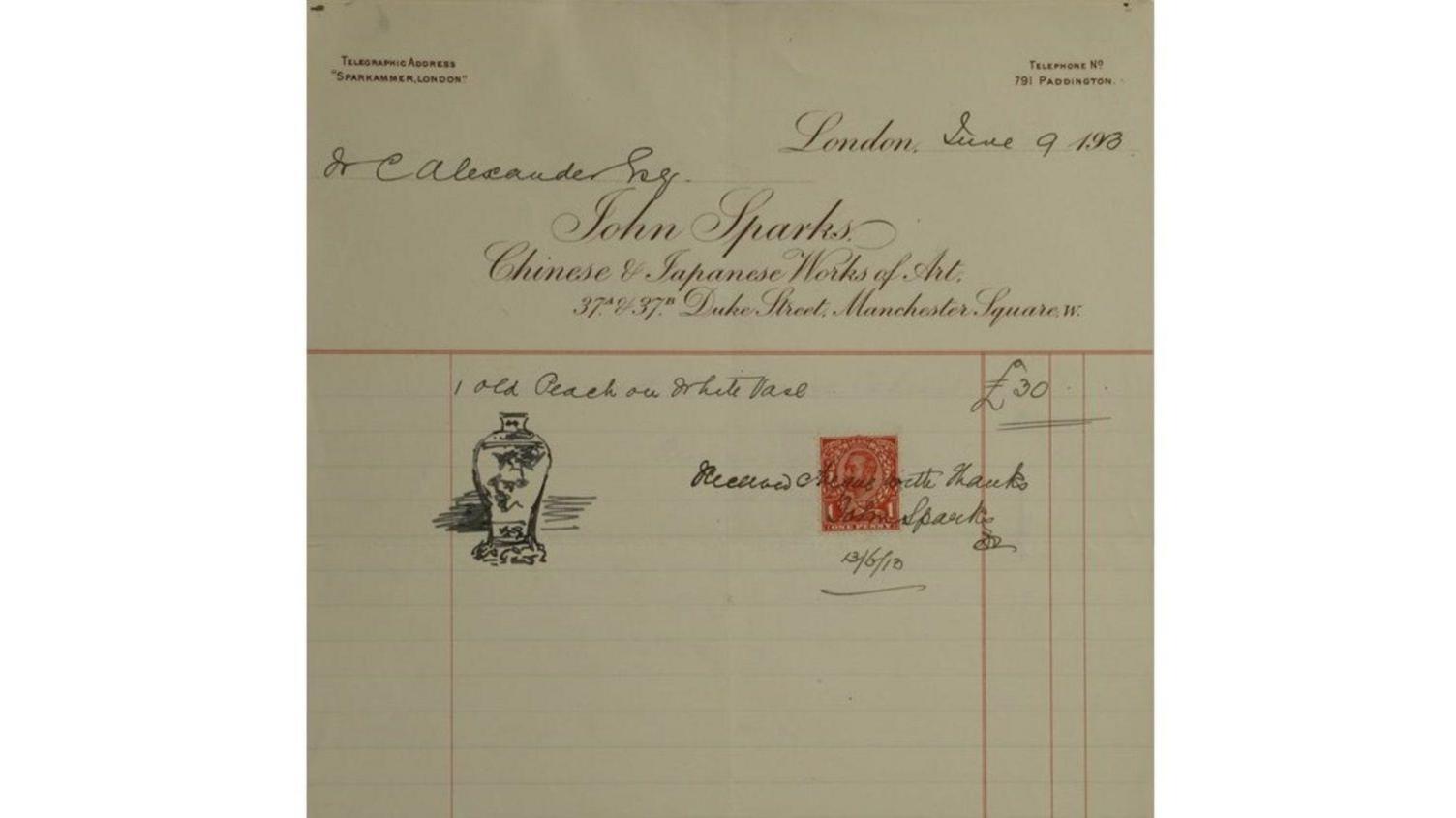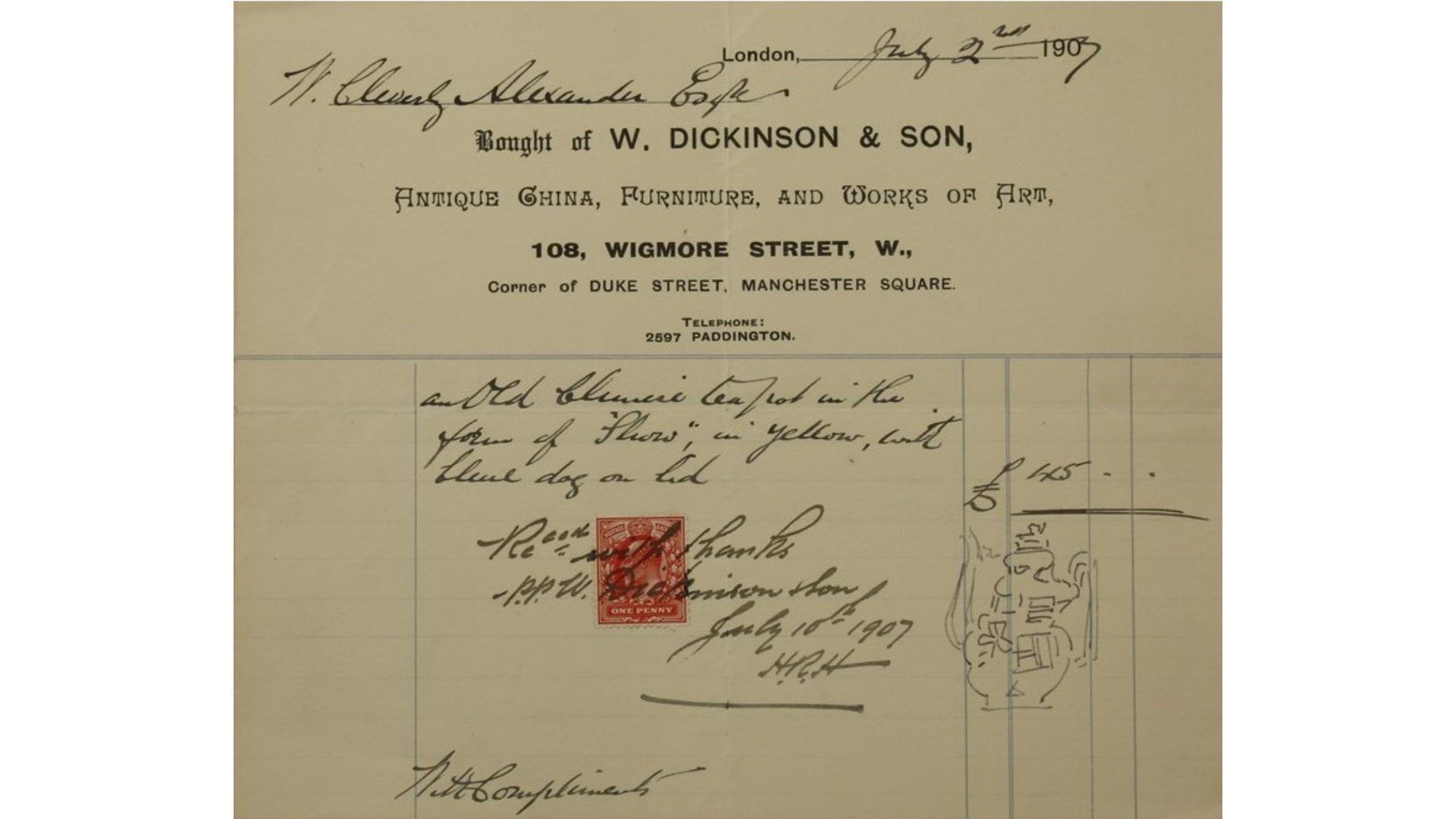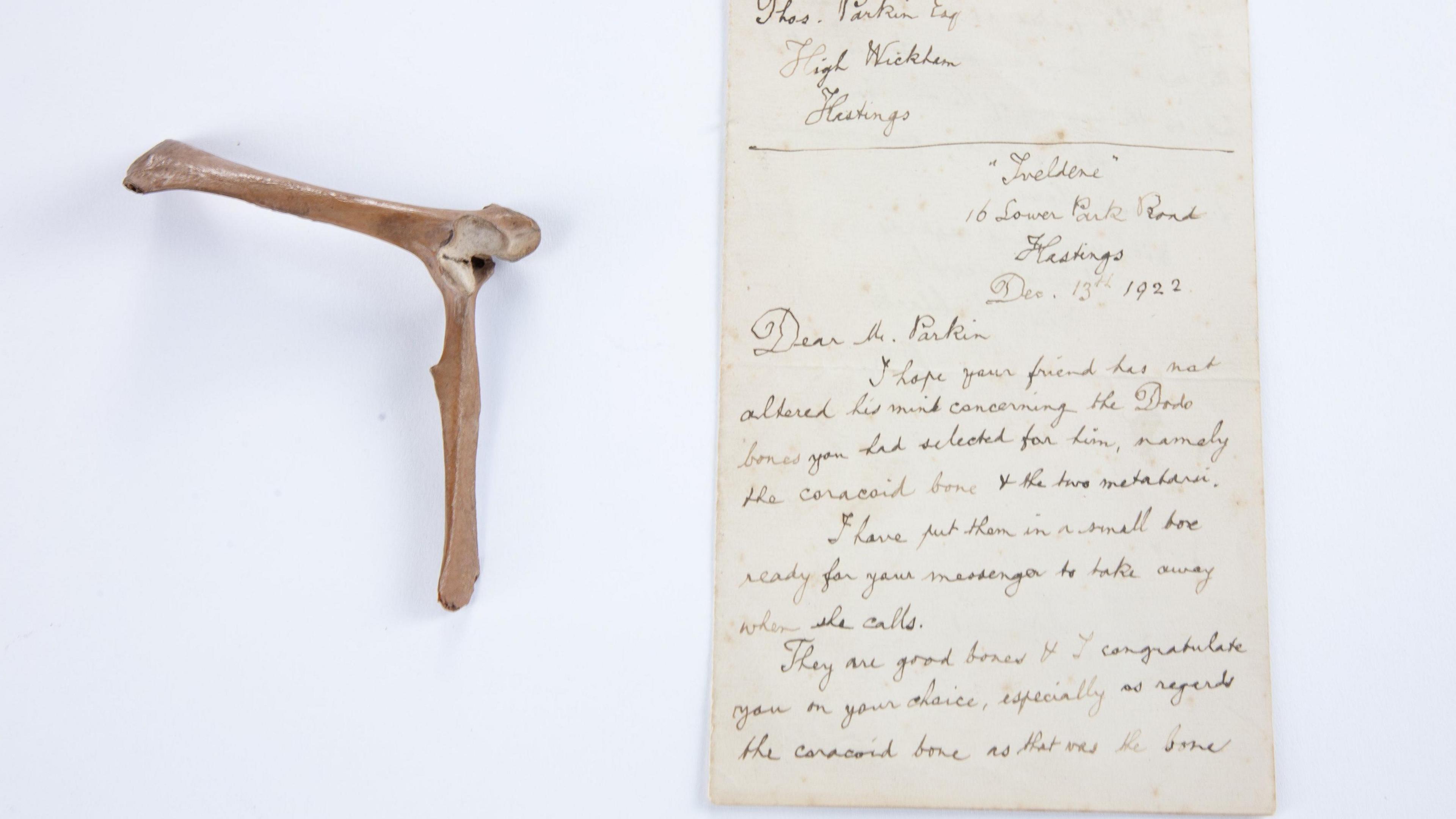Rare Chinese antiques sell for more than £130k

The two rare Chinese antiques are dated from the Kangxi era (1661 to 1722)
- Published
Two rare Chinese antiques more than 300 years old and part of a family collection in East Sussex have been sold for a combined £135,500.
The vase and wine pitcher were from the reign of the Kangxi Emperor (1661 to 1722) and were bought by art connoisseur and philanthropist William Cleverley Alexander in 1907 and 1913.
Both items had been in Mr Alexander's private collection at his country home in Heathfield Park for more than a century.
John Axford, chairman of the auction house Woolley & Wallis, said the family were "delighted" with the auction result on Tuesday.
He added: "What the sale really shows is the importance of history and provenance - collectors prize provenance very highly."
The vase, which has a rare underglaze decorated with two squirrels hiding in a fruiting grapevine, was sold to a buyer in the Far East for £94,500 against an estimate of £20,000-£30,000.
The pitcher was sold for £41,000 to a European buyer against an estimate of £4,000-£6,000.
Mr Axford said: "This shows despite the economic and political troubles in the world, really good items remain highly desirable."

Mr Alexander bought the red vase in 1913 from antiques dealer John Sparks for £30
He explained ceramic wares modelled in the form of characters like the wine pitcher were a "remarkable" innovation of the Kangxi period - an era of stability following the collapse of the Ming Dynasty.
He added the pitcher was a "particularly decorative example". It has a blue Buddhist lion finial, an unusually long neck and moulded as the combined Chinese characters of Fu (good fortune) and Shou (longevity).
There were various uses for wine pitchers of this period, including ritualistic, ceremonial or funerary use.
"They were were created to literally 'toast' the dead and some for more practical usage," Mr Axford added.

Mr Alexander bought the wine pitcher from antiques dealer William Dickinson & Son in 1907 for just £45
Mr Alexander (1840-1916), who was also a banker, was credited for popularising Asian art in Britain during the Victorian era.
Born into a wealthy family, he used his financial resources to amass an impressive collection of Asian art.
His patronage of arts supported emerging artists of the time, including James McNeill Whistler who was famous for his painting Whistler's Mother.
According to the auction house, Mr Alexander bought the wine pitcher for £45 from William Dickinson & Son in 1907.
He then bought the vase from antiques dealer John Sparks on June 1913 for just £30.
Follow BBC Sussex on Facebook, external, on X, external, and on Instagram, external. Send your story ideas to southeasttoday@bbc.co.uk, external or WhatsApp us on 08081 002250.
Related topics
- Published25 September 2024

- Published23 May
